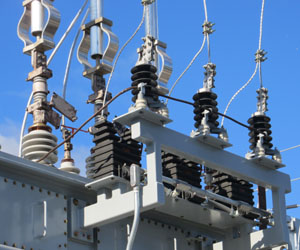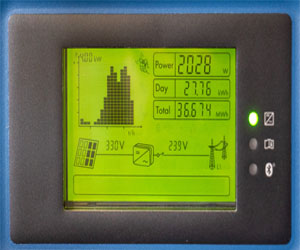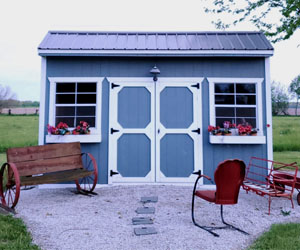


A Brighter, Greener Future

Energy efficiency is a critical component of our transition to a more sustainable and environmentally responsible world. It's not only about reducing energy consumption but also about making the most of the energy we use. In this article, we'll explore the importance of energy efficiency, its benefits, and how individuals and businesses can contribute to a brighter, greener future.
The Importance Of Energy Efficiency
Energy efficiency plays a pivotal role in addressing several pressing global issues:
Environmental Sustainability: Increasing energy efficiency helps reduce greenhouse gas emissions, mitigating the effects of climate change. It allows us to meet our energy needs with a smaller ecological footprint.
Resource Conservation: Efficient energy use preserves finite natural resources like coal, oil, and natural gas. It reduces the need for extensive mining and drilling, minimizing the negative environmental impact of resource extraction.
Cost Savings: For individuals and businesses, energy efficiency translates to lower energy bills. By reducing waste and optimizing energy consumption, you can significantly cut your energy costs.
The Benefits Of Energy Efficiency
Lower Energy Bills: Improved energy efficiency translates directly into lower energy bills for households and reduced operational costs for businesses. This means more money in your pocket and increased competitiveness for companies.
Environmental Conservation: Reduced energy consumption leads to lower emissions of greenhouse gases, making a substantial contribution to environmental preservation and combating climate change.
Energy Independence: Energy efficiency, when combined with renewable energy sources like solar and wind power, can lead to greater energy independence. Less reliance on non-renewable resources means more stability and control over your energy supply.
Enhanced Comfort And Productivity: Energy-efficient technologies often provide improved comfort and productivity. Well-insulated buildings, for example, offer better temperature control and noise reduction, making them more pleasant and conducive to work and relaxation.
Long-Term Investment: Energy-efficient upgrades, such as LED lighting, efficient appliances, and improved insulation, are long-term investments that pay for themselves over time through energy savings.
How To Achieve Energy Efficiency
Energy Audits: Start by conducting an energy audit of your home or business to identify areas where energy is being wasted. Professional auditors can pinpoint inefficiencies and recommend improvements.
Efficient Appliances: Replace old, energy-hungry appliances with newer, more energy-efficient models. Look for the ENERGY STAR label, which signifies high energy efficiency.
Insulation And Weatherization: Ensure your home or building is well-insulated and properly weatherized to prevent heat or cool air from escaping, reducing the need for heating or cooling.
LED Lighting: Replace incandescent and fluorescent lighting with energy-efficient LED bulbs, which use significantly less electricity and last longer.
Smart Technology: Utilize smart thermostats, energy management systems, and programmable timers to control energy consumption more effectively.
Renewable Energy: Consider installing solar panels or wind turbines to generate your electricity, reducing your reliance on conventional power sources.
Transportation Efficiency: Opt for energy-efficient vehicles and adopt eco-friendly driving habits to save on fuel and reduce emissions.
Energy efficiency is a crucial element in our journey toward a sustainable and environmentally responsible future. It not only benefits our wallets but also contributes to the preservation of our planet. By embracing energy-efficient practices and technologies, individuals and businesses can be part of the solution, working toward a brighter, greener future for all.
Cultivating A Passion For Gardening
 Defining The Green Thumb
Defining The Green Thumb
A "green thumb" is a colloquial term that signifies a person's natural aptitude and success in gardening. Those with green thumbs seem to effortlessly grow thriving plants, lush gardens, and abundant crops. They have a knack for understanding the needs of plants, diagnosing issues, and nurturing them to flourish. Many people believe that this ability is an inborn talent, but the reality is more nuanced.
The Science Of Green Thumbs
While some individuals may have a more intuitive understanding of plants due to their upbringing or exposure to gardening from a young age, the concept of the green thumb is not solely based on genetics. Instead, it is rooted in knowledge, experience, and a deep appreciation for the natural world.
Education: Green thumbs often have a solid understanding of horticulture, botany, and gardening techniques. This knowledge allows them to make informed decisions about planting, soil preparation, and care.
 Homemade Cleaning Solutions: You can make your own sustainable cleaning solutions using readily available ingredients like vinegar, baking soda, lemon juice, and essential oils. These natural ingredients are effective for various cleaning tasks and are safe for your family and the environment.
Homemade Cleaning Solutions: You can make your own sustainable cleaning solutions using readily available ingredients like vinegar, baking soda, lemon juice, and essential oils. These natural ingredients are effective for various cleaning tasks and are safe for your family and the environment.
Refillable Containers: Opt for cleaning products that come in refillable containers, reducing the need for single-use plastic bottles that contribute to environmental pollution.
Reusable Cleaning Tools: Invest in reusable cleaning tools such as microfiber cloths and mop heads. These tools effectively capture dirt and dust, reducing the need for disposable cleaning supplies.
Water Conservation: Sustainable cleaning also involves water conservation. Be mindful of the amount of water you use during cleaning, and consider water-saving practices like using a bucket for mopping instead of running water.
A Guide To Harnessing The Sun's Energy
 Energy Use Or Storage: The converted electricity can either be used immediately in your home or stored in batteries for later use, ensuring a constant supply of power even when the sun isn't shining.
Energy Use Or Storage: The converted electricity can either be used immediately in your home or stored in batteries for later use, ensuring a constant supply of power even when the sun isn't shining.
Advantages Of Solar Power For Beginners
Environmental Benefits: Solar power is a clean and renewable energy source. It produces no greenhouse gas emissions, reducing your carbon footprint and contributing to a healthier planet.
Lower Energy Bills: By generating your electricity, you'll rely less on traditional utility providers, leading to significant savings on your energy bills.
Energy Independence: Solar panels provide a degree of energy independence. You're less vulnerable to power outages and price fluctuations from utility companies.
Property Value: Homes with solar panels are often more appealing to buyers, potentially increasing the value of your property.
Government Incentives: Many governments offer financial incentives, tax credits, and rebates to promote solar adoption, making it a more affordable option.
Shaping A Sustainable Future
 Energy Efficiency: Energy-efficient design is a central aspect of eco-friendly design. This involves creating structures and products that require less energy to operate, thus reducing greenhouse gas emissions and energy costs.
Energy Efficiency: Energy-efficient design is a central aspect of eco-friendly design. This involves creating structures and products that require less energy to operate, thus reducing greenhouse gas emissions and energy costs.
Sustainable Materials: The use of eco-friendly materials, such as reclaimed wood, recycled metals, and low-VOC (volatile organic compounds) paints, is a cornerstone of eco-friendly design. These materials have lower environmental impacts and contribute to healthier indoor air quality.
Waste Reduction: Eco-friendly design encourages the reduction of waste at all stages, from manufacturing and construction to product use and disposal. This can include designing for disassembly and recycling.
Biomimicry: Biomimicry is a concept in eco-friendly design where designers draw inspiration from nature's solutions to complex problems. By imitating nature's strategies, designers can create more sustainable and efficient products and buildings.
Energy-Efficient Appliances and Systems: In architecture and interior design, eco-friendly design often incorporates energy-efficient appliances, lighting, and heating, ventilation, and air conditioning (HVAC) systems.
Water Efficiency: Eco-friendly design includes water-saving features such as low-flow faucets, dual-flush toilets, and rainwater harvesting systems. These measures reduce water consumption and promote water conservation.
Adaptive Reuse: In architecture and interior design, adaptive reuse is a strategy that involves repurposing existing buildings or structures rather than demolishing and building anew. This reduces waste and preserves historical and cultural significance.
The Looming Crisis
 Understanding Water Scarcity
Understanding Water Scarcity
Water scarcity is not simply a lack of water; it is a condition where the demand for water exceeds the available supply or when the quality of water is compromised to the point of being unusable. It is a complex issue with far-reaching consequences:
1. Impact On Human Health: In regions where access to safe drinking water is limited, water scarcity can lead to waterborne diseases, malnutrition, and reduced quality of life.
2. Agricultural Consequences: Agriculture is the largest consumer of water globally. Water scarcity can result in crop failure, food shortages, and reduced income for farmers.
3. Economic And Social Disparities: Vulnerable communities often bear the brunt of water scarcity, as they lack the resources to adapt or mitigate its effects.
Causes Of Water Scarcity
Water scarcity can be attributed to several key factors:
1. Population Growth: As the global population continues to increase, so does the demand for water, for consumption, agriculture, and industry.
2. Climate Change: Altered precipitation patterns, increased temperatures, and changing weather patterns affect the availability of freshwater resources.
3. Poor Water Management: Inefficient water use, lack of investment in water infrastructure, and mismanagement of water resources exacerbate scarcity.
4. Pollution: Water pollution, caused by industrial discharges, agricultural runoff, and untreated sewage, can contaminate freshwater sources, rendering them unusable.
Leading The Way To Self-Sufficiency And Sustainability
 Off-grid pioneers are adventurers who have chosen to break free from the shackles of modern civilization, to take a step back from the hustle and bustle of urban life, and to reconnect with the natural world. They often opt for remote locations, nestled in the heart of nature, where they build sustainable homes, harness renewable energy sources, and cultivate their own food. Their goal is to reduce their ecological footprint and live in harmony with the environment.
Off-grid pioneers are adventurers who have chosen to break free from the shackles of modern civilization, to take a step back from the hustle and bustle of urban life, and to reconnect with the natural world. They often opt for remote locations, nestled in the heart of nature, where they build sustainable homes, harness renewable energy sources, and cultivate their own food. Their goal is to reduce their ecological footprint and live in harmony with the environment.
One of the defining characteristics of these pioneers is their resourcefulness. They are masters of ingenuity, using their creativity to overcome challenges that come with living off the grid. From constructing eco-friendly homes using natural materials to repurposing everyday items for new purposes, they exemplify the art of making do with what they have.
Adaptability is another key trait of off-grid pioneers. They understand that living off the grid requires flexibility and the ability to embrace change. These individuals are constantly learning new skills, from foraging for wild edibles to harnessing solar or wind energy, and are quick to adapt to the dynamic conditions of life in the wilderness.
Moreover, these pioneers are committed to reducing their environmental impact. They use renewable energy sources like solar panels and wind turbines, collect rainwater, and practice composting and recycling. By doing so, they serve as a shining example of eco-conscious living, demonstrating how it's possible to minimize harm to the planet even while residing in remote areas.
Off-grid pioneers are more than just isolated individuals; they often form tight-knit communities, where like-minded individuals come together to share knowledge, resources, and a sense of camaraderie.